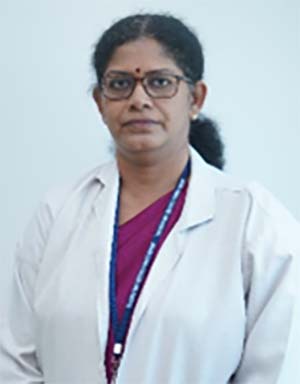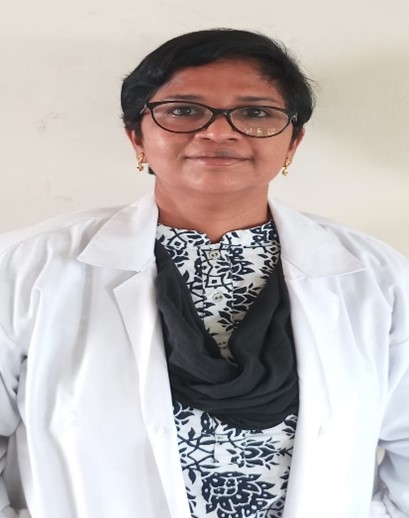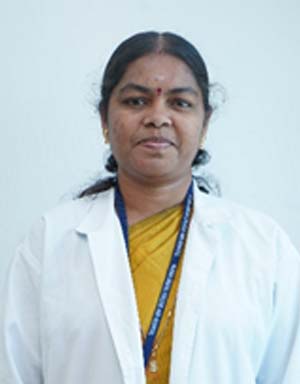
Basic medical sciences lay strong foundation for subsequent clinical learning. It is an integral part of medical and dental curriculum. Dental students have Anatomy, Physiology, and Biochemistry during their 1st year course and Pharmacology, Pathology, and Microbiology in 2nd year curriculum. Study of Basic Medical Sciences makes it easier for students to understand the clinical subjects and for better comprehension of the signs and symptoms of the diseases. Basic Medical sciences departments of Madha Dental College, helps students to have a clear understanding and knowledge of the normal anatomy, physiological functions and biochemical reactions in their first year of dentistry and etiological agents of microbial infections, their pathological manifestations and their pharmacotherapeutic management in their second year of dentistry. Background foundation of basic sciences helps them in their better understanding of clinical sciences and improves their clinical acumen.
To accomplish the highest standard and to be a Centre of excellence in imparting sound knowledge in the field of Basic Medical Sciences to incline the students of dentistry into more skillful and competent dental professionals.
To provide an insight into the discipline of Basic Medical Sciences with effective practical-oriented teaching sessions and innovative approaches to ameliorate the quality of academic performance.
To inculcate comprehensive knowledge in the subjects of Basic Medical Sciences with a strong foundation for a better understanding of dental perspectives at the level of Undergraduate and Postgraduate students.
To augment the importance of scientific research among the students and keep them motivated to attend various conferences, CDEs and workshops to update their knowledge of recent advancements in the field of Basic Medical Sciences.
Department of Anatomy serves as a paving stone for the future doctors. Our department aims to inculcate extensive knowledge of anatomy to the students in relevant to dentistry and to develop a benchmark in education involving macroscopic, microscopic & developmental aspects of Human form.
Anatomy department at Madha Dental college comprises of a dissection hall with 10 dissection tables, skeletons, appropriate ventilation, adequate light source better to accommodate 100 students. There are separate rooms for cadaver storage tanks and specimen storage. Students are taught with adequate prosecuted parts and bones to gain deep insight about the anatomy of head & neck. Museum is well arranged with dry and wet specimens, embryology models and charts for better understanding.
Physiology forms the basis for understanding how the body functions in health and disease. At its core, physiology explores the intricate mechanisms by which cells, tissues, organs, and organ systems interact to maintain homeostasis, and students gain profound insights into phenomena such as metabolism, circulation, respiration, digestion, and sensory perception, illuminating essential principles.
“In the experimental sciences, the greatest discoveries are often made by accident. But in physiology, it is by design.” – Claude Bernard.
Physiology plays a crucial role in the education and practice of dental students. Understanding the physiological mechanisms underlying oral health and disease is essential for diagnosing and treating dental conditions effectively. Moreover, an understanding of pain physiology is essential for managing patient discomfort during dental procedures.
The Department of Physiology in Madha Dental College imparts foundational knowledge to first-year dental students, familiarizing them with routine hematology tests such as determining bleeding time and clotting time.
Additionally, students receive instruction and hands-on practice in performing general examinations and measuring blood pressure, equipping them with essential skills for routine patient care in dental practice.
Overall, the Department of Physiology provides the foundational knowledge that dental students need to comprehend the biological processes involved in oral health and disease, enabling them to deliver comprehensive and effective dental care to their patients.
The Department of Biochemistry at Madha Dental College and Hospital aims to provide a strong foundation for students pursuing dentistry with the necessary insights into the structure and functions of biomolecules, cells, and tissues.
This Department equips the first-year BDS students to enhance their practical skills, helping them to learn the fundamental principles, structures, and functions that govern biological systems at the molecular level. This knowledge is crucial for comprehending the molecular basis of health and diseases, which enables students to make effective decisions in the provision of patient care in dental settings.
Pathology, often called the study of diseases. It is a branch of science that deals with structural and functional changes in diseases, which present with clinical signs and symptoms. It is a discipline that provides diagnostic information to patients and clinicians. Department of pathology focuses training students to identify the cellular changes and helps them to become well-versed in haematology, urology investigations.
The Department of Microbiology at Madha Dental College and Hospital focuses on unveiling the significance of important microbes in dentistry. The Department plays a vital role in inculcating II year B.D.S students the importance of sterilization and disinfection, a profound understanding of different infectious diseases in the oral cavity and their etiological agents.
Also, the importance of biomedical waste management, hand hygiene protocols, knowledge of a broad array of medically important microorganisms and the emergence of antibiotic resistance among microbes are greatly emphasized by the department.
Pharmacology encompasses all aspects of knowledge about drugs, but most importantly those that are relevant to effective and rational use of drugs in daily clinical practice. There are two main branches of pharmacology, Pharmacokinetics and pharmacodynamics.
Other than learning Pharmacology, second year Dental students of Madha Dental College will prepare and dispense mouth washes, tooth paste and tooth powder in their practical lab hours and identify and understand the new drugs with their therapeutic effects and adverse effects.

Professor of Pharmacology, Teaching experience- 25 years

Associate Professor of Biochemistry, Teaching Experience - 16 years

Associate Professor of Physiology

Associate Professor of Microbiology, Teaching Experience: 13 years

Associate Professor of Anatomy, Teaching experience; 9 Years and 5 months

Lecturer of Microbiology, Teaching Experience: 2 years 8 months
| S No | Title of the projects | Principal Investigator |
|---|
in vitro model.Journal of Korean academy of Psychiatric & mental health
nursing.Volume 5, Issue 4, 2023.
studies. International Neurology journal. Volume 27, Issue 4, 2023.
BOOK PUBLICATIONS:
Intellectual property rights, ISBN: 978-93-5850-602-0, JEC Publishers: Jan, 2024.
DEPARTMENT OF PHARMACOLOGY
VIDYALAKSHMI.K
© 2021 Madha Dental College & Hospital. All Right Reserved.Designed & Developed by InnovTouch Technologies Pvt Ltd.